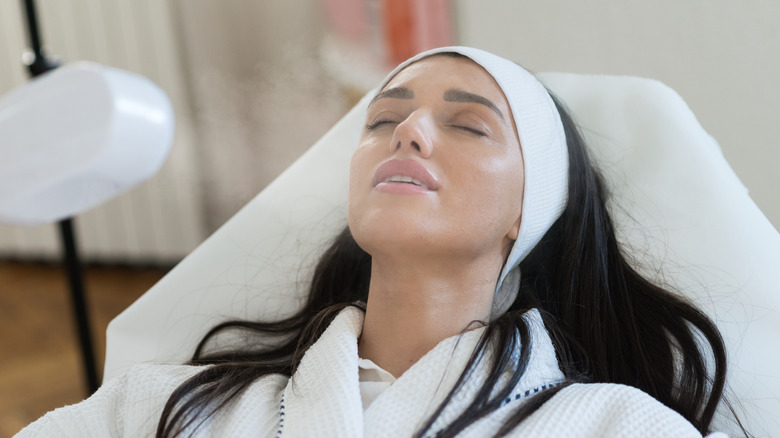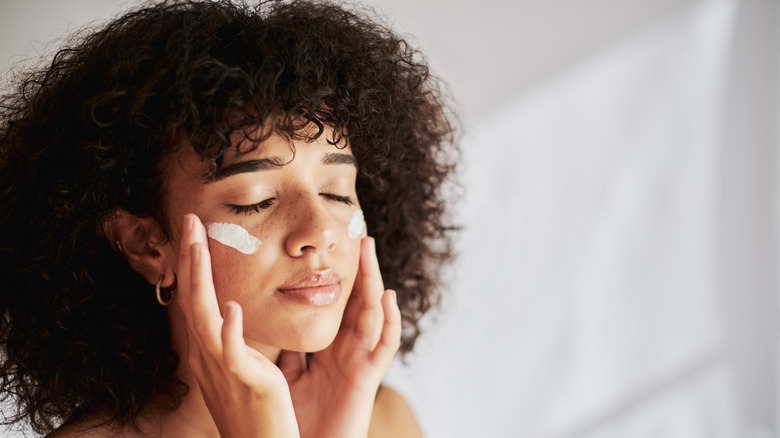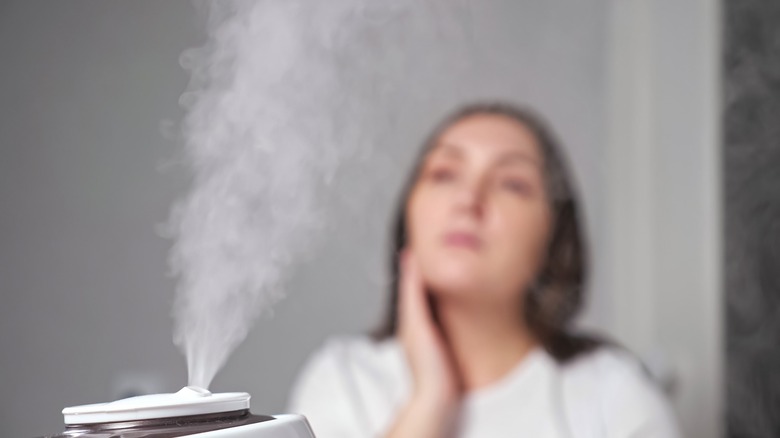Does Facial Steaming Actually Help Treat Acne?
There is seemingly no end to the number of skin care products, viral hacks, or magical cure-alls recommended to those of us with acne-prone skin. In this way, knowing which treatments are the real deal and what will work best for our specific skin type and needs can be difficult. For instance, while the aspirin mask hack went viral on TikTok, many dermatologists actually warned against using it as an acne treatment.
Facial steaming is another, actually professional skincare treatment that you might've seen touted on the internet as a way to manage acne. If you're unfamiliar, facial steaming is a relatively simple skincare treatment that involves exposing the skin to steaming water. It can be performed at a salon or spa in conjunction with other soothing treatments or at home with a steamer.
Anyone who has experienced facial steaming will be able to vouch for its relaxing qualities, but is it actually an effective way to manage breakouts? According to experts, this skincare treatment actually has many benefits that can potentially improve acne.
The skincare benefits of facial steaming
Experts explain that facial steaming can be a viable treatment for acne, but it can't cure your acne on its own and won't work for everyone. One of the primary benefits to blemish-prone skin is that steaming can help remove pore debris, with aesthetician Stephanie Diliberto telling Health Essentials, "Steam can help soften the skin and loosen oil and buildup in your pores."
This can make removing things like black and whiteheads easier, which is why facial steams are often performed before other facials or dermatological extractions. On top of this, steaming can make your skin more susceptible to acne-treating products.
"By hydrating the skin, facial steaming also helps increase penetration of active ingredients applied topically immediately after steaming," explains board-certified dermatologist Dr. Hadley King via InStyle. "Active ingredients like retinol or vitamin C can penetrate better and become more effective."
Beyond this, experts mention that steaming can soothe skin, promote circulation, and combat puffiness. However, though the treatment offers many benefits, it can increase inflammation for those with skin conditions. Because of this, dermatologists don't recommend steaming to those with rosacea, eczema, or atopic dermatitis (per Byrdie).
Expert tips for facial steaming
In addition to explaining the benefits of facial steaming, experts also offer some tips for the process. Mostly, they recommend getting the treatment done professionally, but they do offer some suggestions for those opting for an at-home steam sesh, which you can do using a dedicated steamer or a bowl of boiling water.
As Dr. Apratim Goel, dermatologist and laser surgeon, tells Vogue India, "It is recommended that you get it done from a skin care professional, but if you are doing it yourself, use a steamer and let the steam blow all over the face. Tie a headband to keep the hair away from your face. Keep your eyes closed to prevent any irritation and place your face a few inches away from the bowl to avoid burns."
In addition, you want to ensure you're using purified or distilled water, as you don't want to steam added minerals or unwanted bacteria into the skin. Additionally, over-steaming your skin can lead to dryness and unwanted effects, so experts warn against using the treatment more than twice a week or for more than 5 to 15 minutes at a time.


